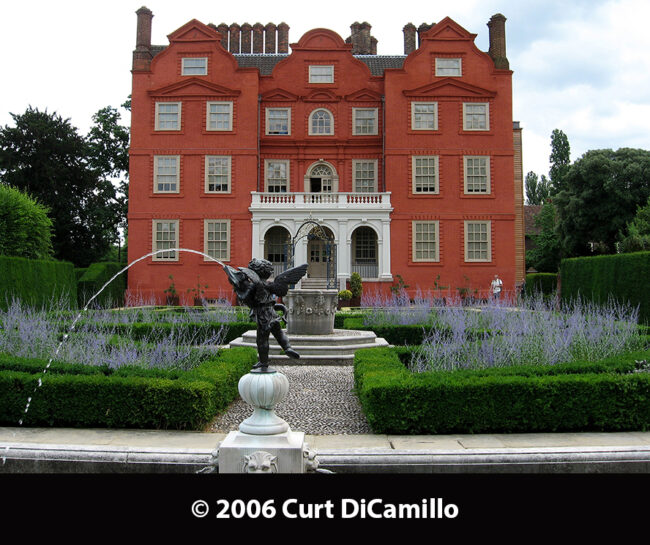
The garden facade
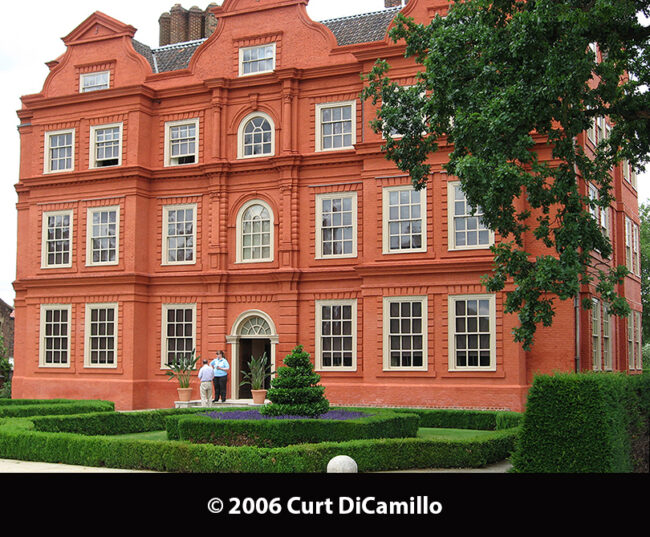
The entrance facade
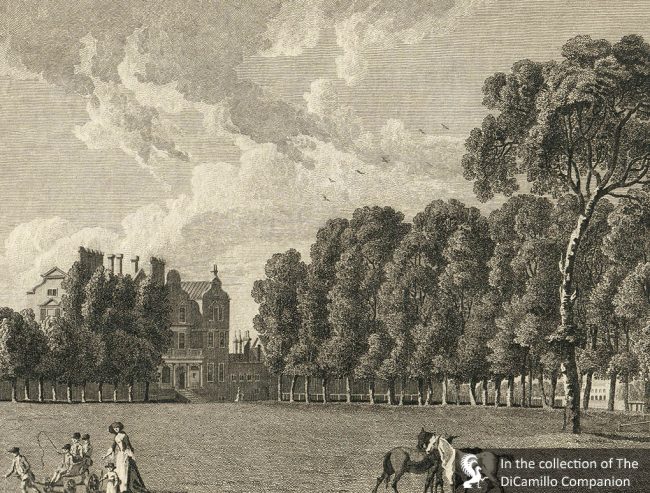
A 1778 engraving of the house from "The Copper Plate Magazine"
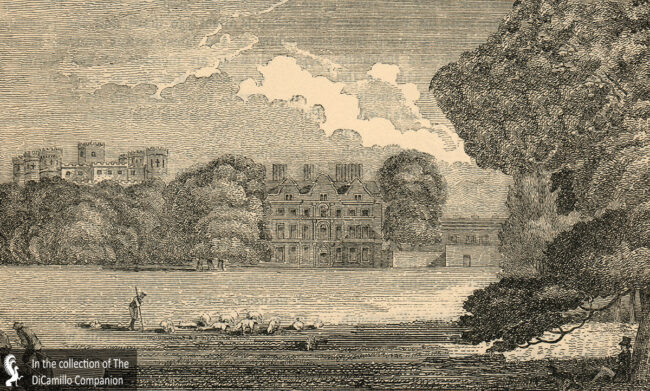
Kew Palace, right, and George III's demolished Castellated Palace on the left.
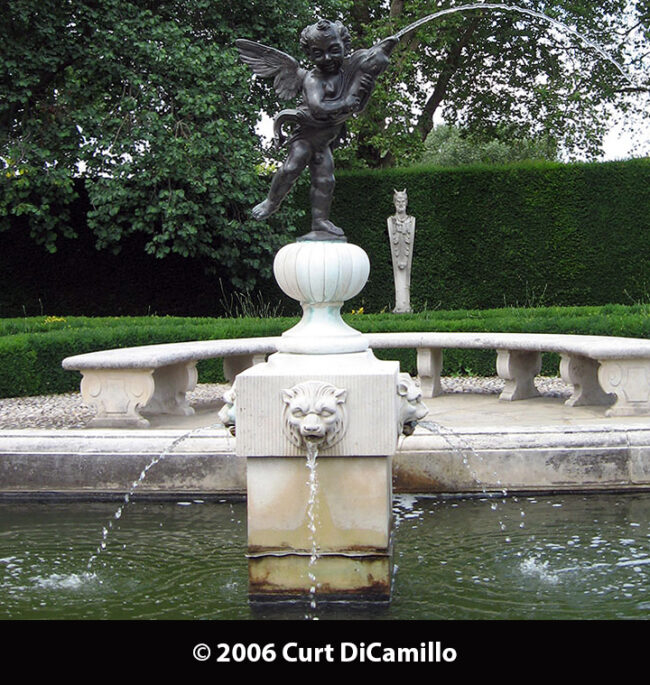
Palace garden

Palace garden
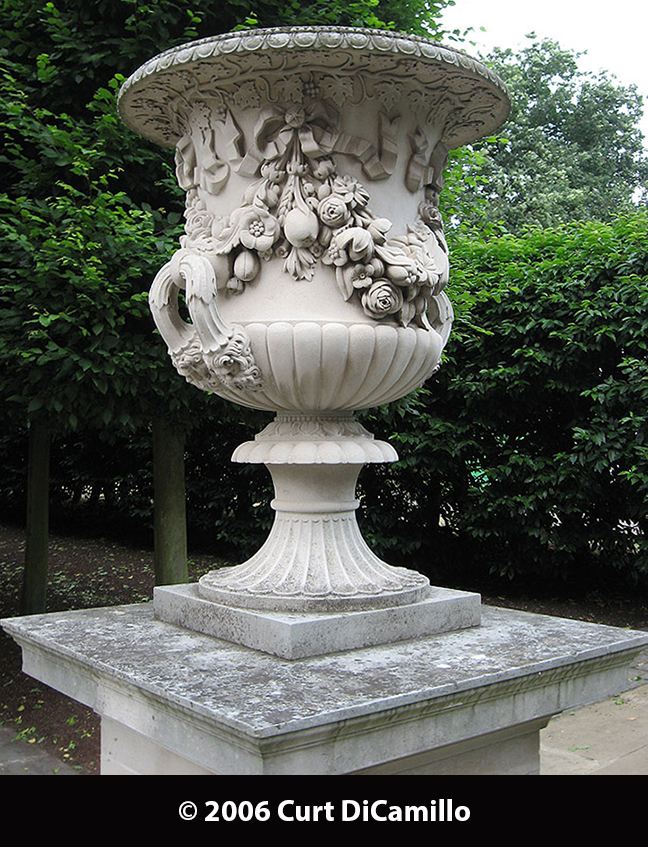
Palace garden
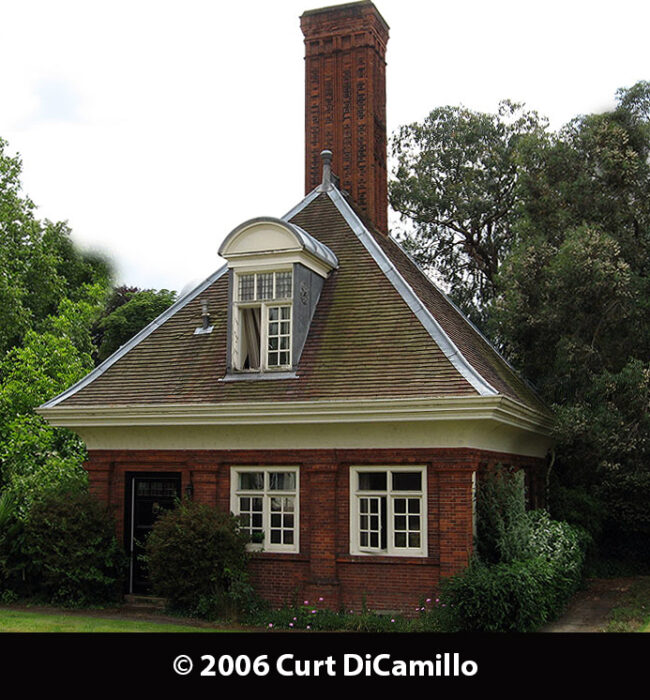
Nesfield's Lodge
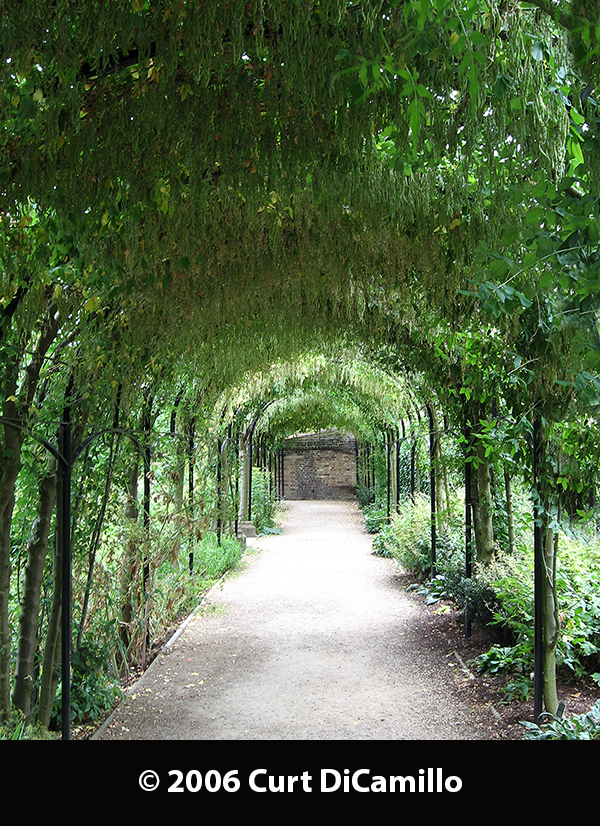
Royal Botanic Gardens
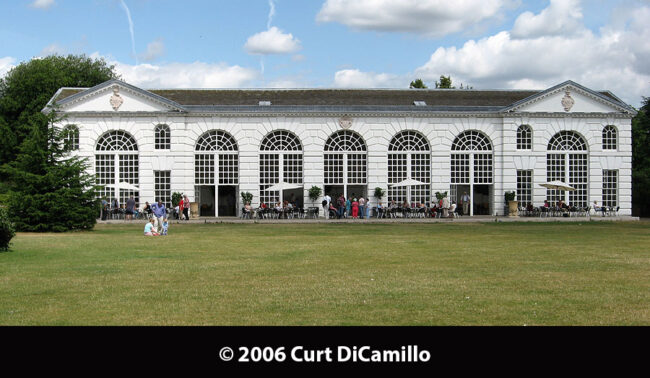
The Orangery, Royal Botanic Gardens.
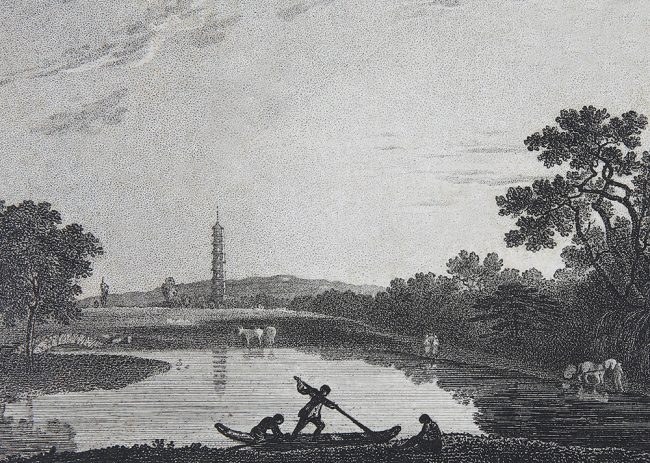
A 1793 engraving of the Royal Botanic Gardens with William Chambers's Great Pagoda, from "Angus's Views of Seats." By kind permission of a private collection.
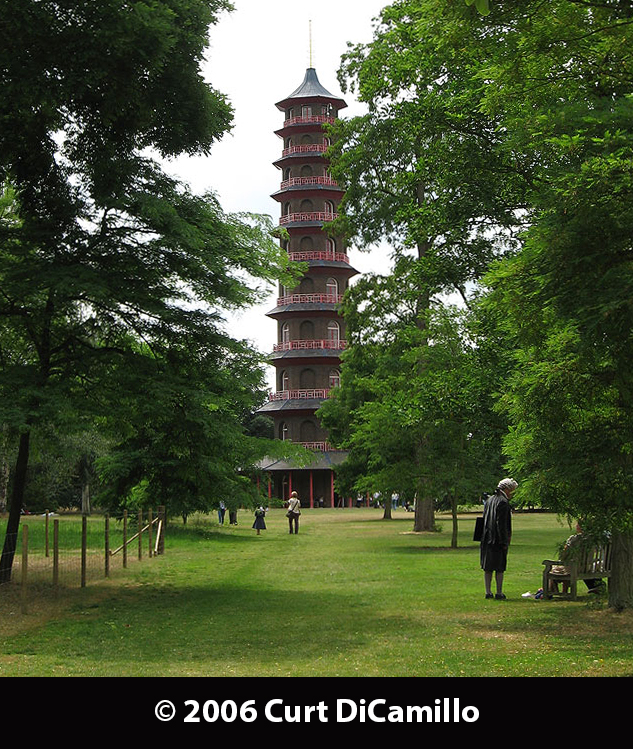
William Chambers's Great Pagoda, Royal Botanic Gardens.
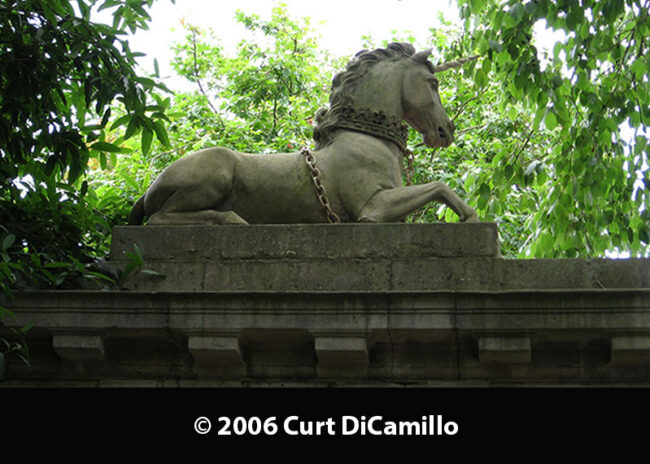
Unicorn Gate, Royal Botanic Gardens.
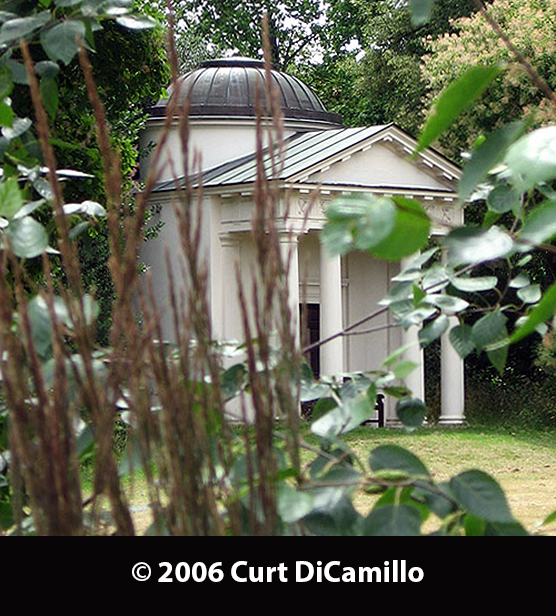
The Temple of Bellona, Royal Botanic Gardens.

The Ruined Arch, Royal Botanic Gardens.
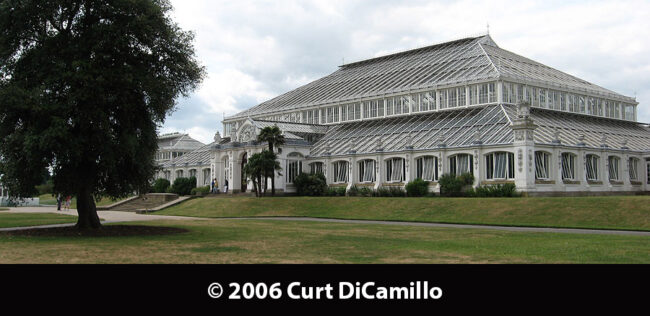
The Temperate House, Royal Botanic Gardens.
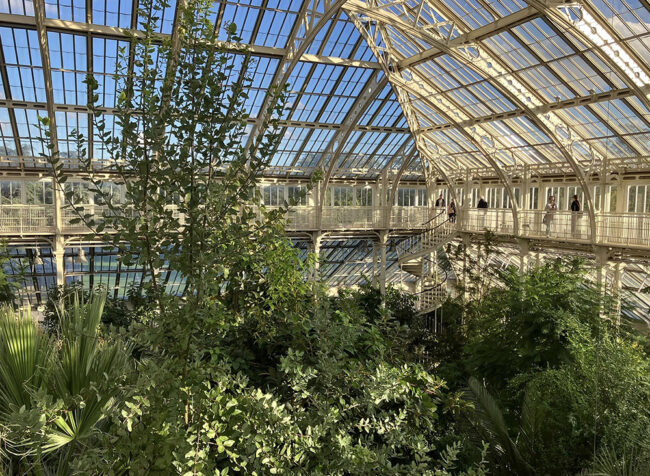
The Temperate House. Photo by kind permission of Emily Allgeyer.
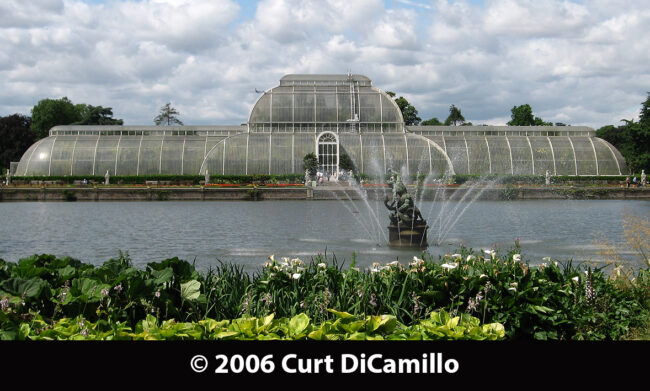
The Palm House, Royal Botanic Gardens.
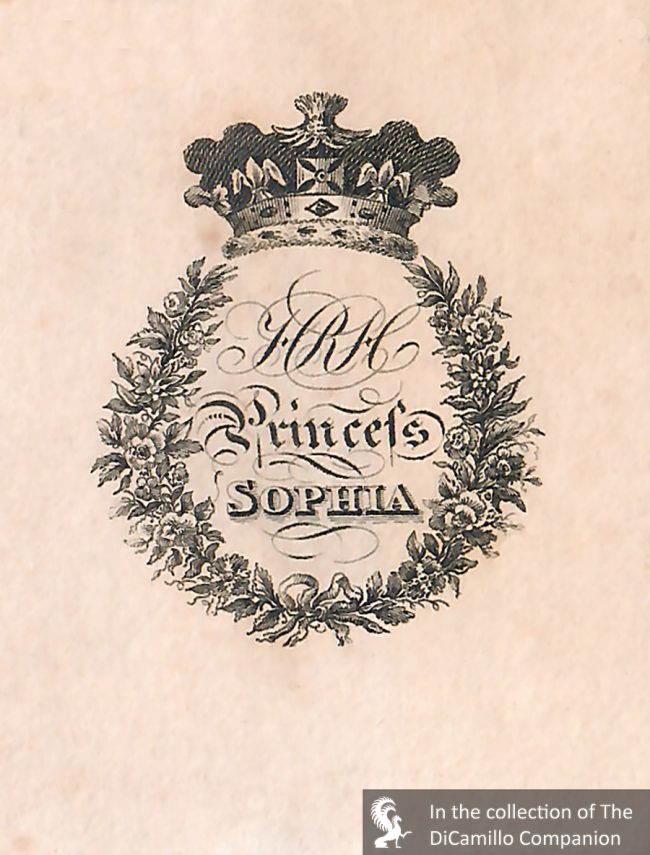
An 18th century bookplate of Princess Sophia, a daughter of George III, who lived at Kew Palace.
Earlier Houses: The undercroft of an earlier 16th century house was incorporated into the current house.
Built / Designed For: Samuel Fortrey
House & Family History: Kew Palace is the only significant remaining building of a large complex of royal buildings that once existed here. Built in 1631 by Samuel Fortrey, a London merchant of Flemish ancestry, Kew began life as a modest country house of red brick with curved Dutch gables. Fortrey was part of a cosmopolitan and limited movement that disdained the Tudor architecture style that was then popular, but also found the rising Palladian style too cold and severe. Kew Palace and other buildings like it (Swakeleys, Uxbridge, and Cromwell House, Highgate) blended the Renaissance with Inigo Jones, a little panache, and the architectural flavor of the Low Countries. Kew (the smallest of England's royal palaces) was first used by the royal family in 1728; the house was purchased by George III in 1781 as an annex to the White House. The king's children primarily grew up at Kew; Queen Charlotte died here in 1818; George IV was born at Kew; and George III recuperated from his devastating bouts of porphyria (referred to at the time as bouts of insanity) at Kew Palace. The spiral staircase from the palace is today installed in Cheekwood, built in the 1930s in the suburbs of Nashville, Tennessee, and called "one of the last great manor houses built in the United States" (Cheekwood today houses the Cheekwood Museum of Art). In 2003 Kew Palace received a £1.5 million grant from the Heritage Lottery Fund toward the project to conserve and reopen the palace to the public. On April 21, 2006 Queen Elizabeth II and the royal family celebrated the queen's 80th birthday with a fireworks display above the palace and then dinned in the King's Drawing Room. On April 27, 2006, the palace reopened to the public following a decade-long £6.6 million conservation and representation project. A famous 1733 musical portrait that shows Frederick, Prince of Wales, and his three eldest sisters features the Dutch House. Painted by the prince's librarian and art agent, Philippe Mercier, the portrait shows the Prince of Wales playing the cello, Princess Anne at the harpsichord, Princess Caroline playing the lute, and Princess Amelia reading from Milton. There are three known versions of the painting, two of which show the Dutch House in the background (National Portrait Gallery and the National Trust), and a third version, in the Royal Collection, that shows the same group in an unknown interior. In the early 19th century James Wyatt designed the now-demolished Castellated Palace (see "Images" section) for George III.
Garden & Outbuildings: The Royal Botanic Gardens, Kew (see "Images" section), are listed as a World Heritage Site by the United Nations.
Architect: James Wyatt
Date: 1801-11Architect: Thomas Hardwick
Date: 1824-27
Title: Biographical Dictionary of British Architects, 1600-1840, A - HARDBACK
Author: Colvin, Howard
Year Published: 2008
Reference: pgs. 482, 1188
Publisher: New Haven: Yale University Press
ISBN: 9780300125085
Book Type: Hardback
Title: Newsletter of the Society of Architectural Historians of Great Britain
Author: NA
Year Published: NA
Reference: No. 83, Autumn 2004, pg. 8
Publisher: UK: The Society of Architectural Historians of Great Britain
ISBN: NA
Book Type: Magazine
Title: Country Life (magazine)
Author: NA
Year Published: NA
Reference: Jul 17, 2003, pg. 57
Publisher: Bath: Future plc
ISBN: NA
Book Type: Magazine
Title: Victorian Country House, The
Author: Girouard, Mark
Year Published: 1990
Reference: pg. 321
Publisher: New Haven: Yale University Press
ISBN: 0300034725
Book Type: Softback
Title: Living By Design: Leslie Cheek and the Arts
Author: Rouse, Parke, Jr.
Year Published: 1985
Reference: pgs. 40-42
Publisher: Virginia: The College of William and Mary
ISBN: 0961567007
Book Type: Hardback
House Listed: Grade I
Park Listed: Grade I
Past Seat / Home of: SEATED AT EARLIER HOUSE: Robert Dudley, 1st Earl of Leicester, 16th century. SEATED AT CURRENT HOUSE: Samuel Fortrey (Forterie), 1631-81. Sir Richard Levett, 1697-1711. Queen Caroline of Brandenburg-Ansbach, consort of George II, 1720s. King George III and Queen Charlotte, 18th century.
Current Ownership Type: The Crown / Royal Family
Primary Current Ownership Use: Visitor Attraction
Ownership Details: Kew Palace is a crown property administered by Historic Royal Palaces. The gardens, in which the palace is located, are administered by Royal Botanic Gardens, Kew. You pay to enter the gardens and then pay again to access the palace.
House Open to Public: Yes
Phone: 02031-666-000
Fax: HOUSE: 02083-325-197. GARDENS: 02083-325-197
Email: [email protected]
Website: https://www.hrp.org.uk/
Historic Houses Member: No